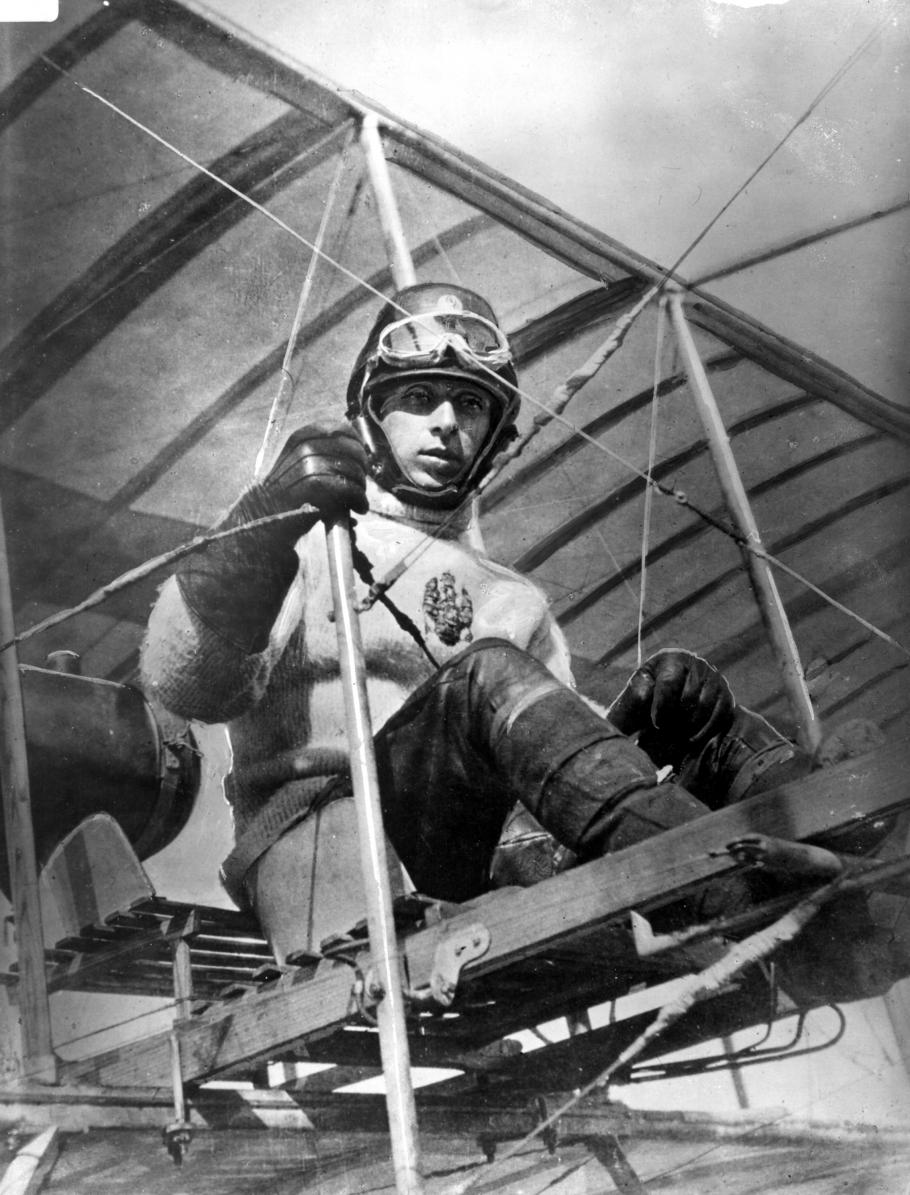With all the activities going on lately about World War II aircraft, I’d like to tell the story of Russian naval pilot Alexander de Seversky, that country’s top naval ace in World War I, who later became one of the most influential proponents of the use of strategic air power in warfare — and Disney film star — in the United States. De Seversky was born in Triflis, Russia on June 7, 1894, to an aristocratic family. He learned how to fly by age 14 from his father who owned one of the first airplanes in Russia. De Seversky earned a degree in aeronautical engineering from the Imperial Russian Naval Academy in 1914 — at the outbreak of World War I — and became a second lieutenant in the Imperial Naval Air Service the following year.
The first time de Seversky saw combat, he was shot down, losing his lower right leg in the process, but due to his grit and determination he was flying once again a year later, assigned to the Baltic fleet. His luck greatly improved, and during 57 missions de Seversky downed 13 German fighters, making him Russia’s top naval ace. He was awarded the highest honors his country could confer. In 1918, de Seversky went to the United States as an assistant naval attaché to the Russian Embassy. This was a fortuitous assignment, as it gave him the chance to escape the Bolshevik Revolution by remaining in the U.S. Soon, he was working at the War Department as an aeronautical engineer and test pilot, acting for a time as a special consultant to the famed general, Billy Mitchell, with whom he agreed that supremacy in wartime could be achieved with aerial bombing, not battleships. This was de Seversky’s credo for his entire life. After becoming a U.S. citizen in 1927, de Seversky received a commission in the Army Air Corps as a major. De Seversky made numerous contributions to aviation. He filed a patent for aerial refueling in 1921 and developed the first bombsight stabilized with a gyroscope, and invented many other aeronautical instruments. He started an aircraft company and helped design and test his aircraft himself. De Seversky and his design team, headed by Alexander Kartveli, were responsible for the following innovative aircraft:
- An advanced design amphibian in which he set world speed records from 1933 to 1935
- The BT-8, the U.S. Army Air Corps’ first monoplane basic trainer developed for that purpose
- An all metal monoplane that set speed records in the 1933-39 National Air Races and a transcontinental record in 1938
- The P-35 fighter, predecessor to the P-47 Thunderbolt, one of the great WWII fighters
Although de Seversky was a design visionary and his company’s greatest salesman, his management skills were lacking and he was forced out when the company was reorganized as Republic Aviation Corporation in 1939. De Seversky then turned to writing, lecturing, and advising, becoming a leading expert on the strategy of aerial warfare. A flamboyant character, he was well-suited to public appearances and often acted as an expert commentator on television and in documentaries. One of his most conspicuous achievements was the 1942 publication of his first book, Victory Through Air Power, which became a bestseller and a movie. Coming on the heels of the Japanese attack on Pearl Harbor, the book’s theme caught the eye of Walt Disney, who believed so strongly in it he financed a movie also called Victory Through Air Power. The two shared a common goal — to awaken the allies to the need for the greater use of strategic air power to combat Germany’s and Japan’s advances. While the first half of the movie is animated, de Seversky appears during the latter half and explains his theory in a multimedia presentation. You can watch the entire film, Victory Through Air Power, with an informative introduction by film critic and historian Leonard Maltin, on YouTube. For his efforts and commitment to the issue of the superiority of aerial bombardment, President Harry Truman presented de Seversky with the Medal of Merit. De Seversky received many other honors in his adopted country, adding to his long list of Russian awards: the Sports Pilots Association Trophy in 1933, the International Harmon Trophy in 1939 and 1947, the General William E. Mitchell Memorial Award in 1962, and the Exceptional Service Award from the United States Air Force in 1969.
In a June 24, 1947 ceremony on the White House lawn, President Harry S. Truman awarded the International Harmon Trophy to Major Alexander P. de Seversky. The Ligue Internationale des Aviateurs awarded the trophy to de Seversky for "outstanding leadership, patriotism, and unselfish devotion to the security and aeronautical progress of the United States." From left to right: Mrs. Evelyn de Seversky, Major Alexander de Seversky, Secretary of War Robert Patterson, and President Harry S. Truman.
He was inducted into the Aviation Hall of Fame in 1970 for "his achievements as a pilot, aeronautical engineer, inventor, industrialist, author, strategist, consultant, and scientific advances in aircraft design and aerospace technology." De Seversky was married to New Orleans socialite Evelyn Olliphant, who was also well-known as a pilot. She, in fact, learned to fly as a surprise for her husband, and the two of them flew on many trips together. De Seversky died on August 24, 1974. Watch de Seversky explain his views in this 1957 interview with future 60 Minutes reporter Mike Wallace.


